Author Archives: Todd Hoff
Author Archives: Todd Hoff
What is the cloud? Why is it called a cloud? How does the cloud work? What does it mean when something is 'in the cloud'?
I wrote a new book: Explain the Cloud Like I'm 10, answering those questions for the complete beginner. It makes the perfect gift for Halloween. And Thanksgiving. And Christmas. Oh, and birthdays too!
The irony is, if you read HighScalability, you're not the target audience :-) Explain the Cloud Like I'm 10 is for people who hear about the cloud everyday and have wondered what it is.
Talking with people outside the tech bubble I've found the cloud is still a mystery. I think that's because almost every explanation of the cloud I could find was a rewording of the same unhelpful technobabble.
In Explain the Cloud Like I'm 10 I've used a lot of pictures and a lot of examples. I go slow and easy. I try really hard to build up an intuitive understanding of what the cloud is and how it works.
If you know of anyone who might benefit from a book like this, I'd appreciate it if you'd pass it on.
thanks!

Hey, it's HighScalability time:

Cassini's last image of Saturn, stitched together from 11 color composites, each a stack of three images taken in red, green, and blue channels. (Jason Major)
If you like this sort of Stuff then please support me on Patreon.

This is a guest post by Jake Lumetta, co-founder and CEO of ButterCMS.
ButterCMS lets developers add a content management system to any website in minutes. Our business requires us to deliver near-100% uptime for our API, but after multiple outages that nearly crippled our business, we became obsessed with eliminating single points of failure. In this post, I’ll discuss how we use Fastly’s edge cloud platform and other strategies to make sure we keep our customers’ websites up and running.
At its core, ButterCMS offers:
A dashboard for content editors
A JSON API for fetching content
SDK’s for integrating ButterCMS into native code
Hey, it's HighScalability time:

Tech is transforming how food is being grown. Lots of opportunity for local nerdy production. Greenhouses even look like dartacenters! (This Tiny Country Feeds the World)
If you like this sort of Stuff then please support me on Patreon.

Maybe programming will look something like the above video. Humans and AIs working together to produce software better than either can separately.
The computer as a creative agent, working in tandem with a human partner, to produce software, in a beautiful act of co-creation.
The alternative vision—The Coming Software Apocalypse—is a dead end. Better requirements and better tools have already been tried and found wanting. Requirements are a trap. They don't work. Requirements are no less complex and undiscoverable than code. Tools are another trap. Tools are just code that encode an inflexible solution to a problem that's already been solved.
Admittedly, I'm cheating. I have no idea how any of this will work, but here are the seeds of how it has already started:
Here's what we do know: neither tools or requirements are a silver bullet, they are a method of incrementally improving software quality. Software production quantity is not increased at all.
What we need is a manufacturing process that puts software production on an exponential curve. The only conceivable tool we have at Continue reading
Hey, it's HighScalability time:
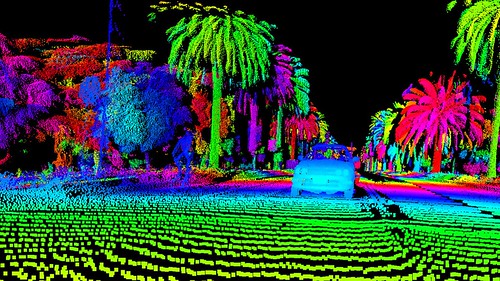
LiDAR sees an enchanted world. (Luminar)
If you like this sort of Stuff then please support me on Patreon.

Ripple’s XRP Ledger is a blockchain-based payment network that transfers funds between any type of currency within a few seconds with average transaction costs of a fraction of a penny. The core of this peer-to-peer network is an open source C++ application called rippled. Ripple’s goal is to supplant the world’s existing legacy payment networks. As such, scalability is a continuous goal. This document describes how the rippled team has integrated performance engineering into its development processes, and how this has contributed to throughput gains of over 1000%.
Performance engineering practices deliver benefits in addition to measurable performance gains. These include the ability to report on the capabilities of the software so that users can feel confident that their needs will be met by the system. Performance engineering informs capacity planning and optimal configuration of environments to support the application. Many performance problems are caught and addressed before customers notice them. As process automation improves, each change to the software can be quickly assessed for improvement or regression. This methodology also makes better use of developer time by helping choose the most effective tasks for improving performance. Any software project serious about supporting global scale should integrate performance engineering Continue reading
Hey, it's HighScalability time:
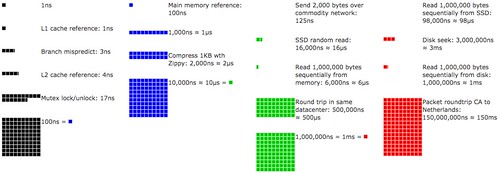
Latency Numbers Every Programmer Should Know plotted over time. Click on and move the slider to see changes. There were a lot more blocks in 1990.
If you like this sort of Stuff then please support me on Patreon.

This is a guest post by Roger Jin, Software Architect at ButterCMS and co-author of Microservices for Startups.
For a profession that stresses the importance of naming things well, we've done ourselves a disservice with microservices. The problem is that that there is nothing inherently "micro" about microservices. Some can be small, but size is relative and there's no standard of unit of measure across organizations. A "small" service at one company might be one million lines of code while far less at another.
Some argue that microservices aren’t a new thing at all and rather a rebranding of Service Oriented Architectures, while others advocate for viewing microservices as an implementation of SOA similar to how Scrum is an implementation of Agile.
How do you align your team when no precise definitions of microservices exist? The most important thing when talking about microservices on a team is to ensure that you are grounded in a common starting point.
But ambiguous definitions don’t help with this. It would be like trying to put Agile into practice without context for what you are trying to achieve, or an understanding of precise methodologies like Scrum.

Hey, it's HighScalability time:

Ever feel like howling at the universe? (Greg Rakozy)
If you like this sort of Stuff then please support me on Patreon.
Hey, it's HighScalability time:
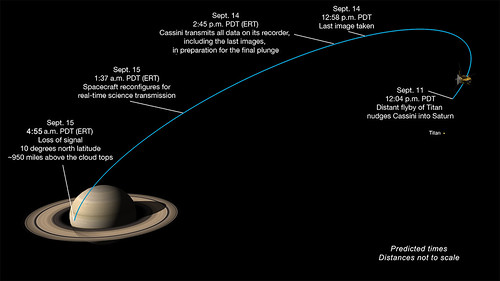
If you like this sort of Stuff then please support me on Patreon.

Thanks to zero marginal cost digital production methods, we're seeing content markets—for the first time—develop in conditions free from supply and price constraints.
In the process we've learned something: consumers have an unquenchable thirst for new content; content creators are willing to oblige with an equally prodigious stream of new content; platforms that best control access to the customer are the biggest winners; the reward for content creators varies drastically by medium and platform.
For consumers, life is now a streaming fixed priced buffet of unending variety and diversion.
For producers, the changes have been terrifying. Old modes have crumbled, leaving everyone scrambling to figure out what, if anything, comes next.
To adapt, content creators are learning to exploit capture loops, bundling, and collaboration to extract money from a digital economy that has collectively decided it rarely wants to pay artists directly for their content anymore.
The most highly evolved form of digital content platform strategies can be found in the book market. Why? Because Amazon.

Hey, it's HighScalability time:
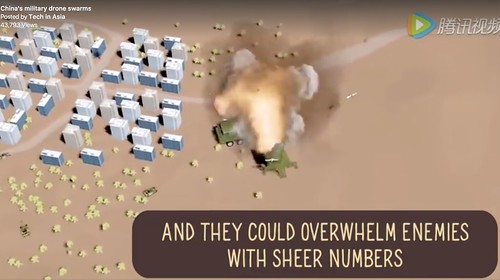
May you live in interesting times. China games swarming drone attacks. Portable EMP anyone? (Tech in Asia)
If you like this sort of Stuff then please support me on Patreon.
Hey, it's HighScalability time:
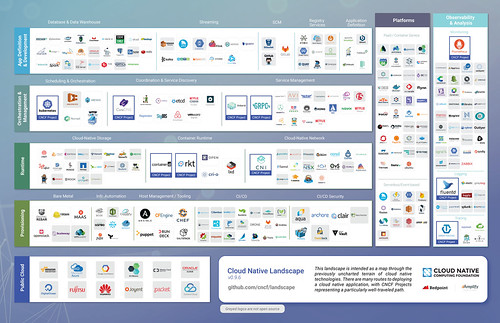
Obviously, cloud native is simplicity itself. (Cloud Native Landscape Project)

Hey, it's HighScalability time:
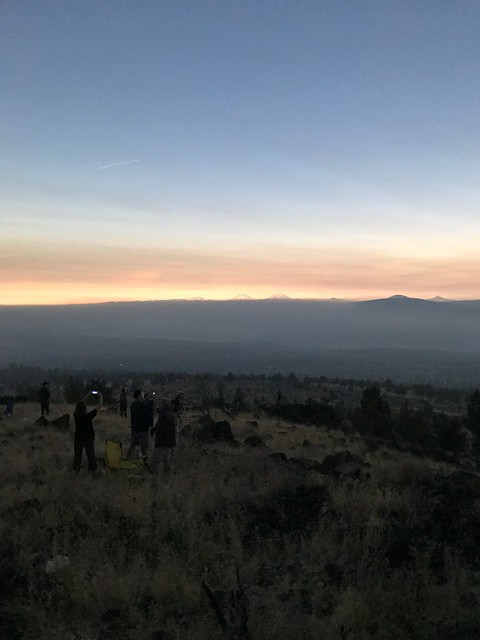
View of the total solar eclipse from a hill top near Madras Oregon, August 21, 2017. As totality approaches, dragons gorge on sun flesh; darkness cleaves the day; a chill chases away the heat; all becomes still. Contact made! Diamonds glitter; beads sparkle; shadow band snakes slither across pale dust; moon shadow races across the valley, devouring all in wonder. Inside a circle of standing stones, obsidian knives slash and stab. Sacrifices offered, dragons take flight. In awe we behold the returning of the light.
Sorry about missing last week, but my birthday won out over working:
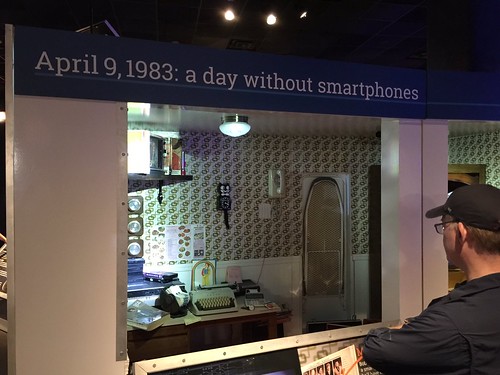
Ouch! @john_overholt: My actual life is now a science exhibit about the primitive conditions of the past.